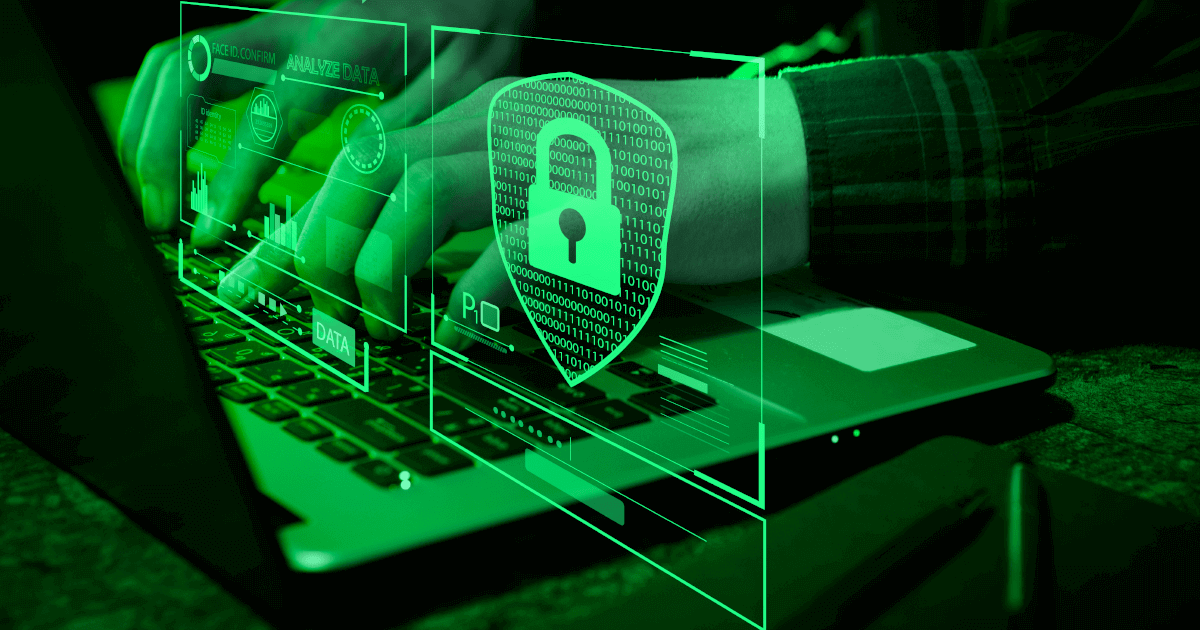Ransomware attacks have become a major cybersecurity threat, with malicious software encrypting systems and demanding ransom payments. This article will examine what ransomware is, how it works, and basic strategies to counter such attacks. We will also discuss recent significant ransomware incidents and their impacts on organizations and individuals.
Topics like fundamental strategies for ransomware protection in cybersecurity, data backup and recovery processes, methods for detecting and preventing attacks, education and awareness-raising, ransom payment and non-payment strategies will be analyzed in detail. Additionally, we aim to offer readers an insightful outlook on future ransomware threats and cybersecurity trends.
Ransomware are malicious software that infiltrate computer systems, block access to data, and demand ransom payments for its release. Attackers typically gain access via phishing emails with malicious attachments or links, compromised websites, or exploiting security vulnerabilities. Once activated on a target system, ransomware encrypts files and denies users access, then demands payment.
Through this article, we aim to provide readers with an in-depth understanding of ransomware attacks and help them develop effective protection strategies. Given the critical importance of raising cybersecurity awareness and developing robust strategies against such threats, we hope to assist our readers in strengthening their security.
What is Ransomware and How Does It Work?
Ransomware is one of the major cybersecurity threats today. It is a type of malicious software that infiltrates computer systems, encrypts files, and demands ransom payments in exchange for decryption. Attackers typically gain access through phishing emails containing malicious attachments or links, compromised websites, or exploiting security vulnerabilities. Once activated on a target system, ransomware encrypts files and denies users access until a ransom is paid.
Understanding how ransomware attacks work is important for developing effective protection strategies against such threats. Attackers usually deliver ransomware to victims through email attachments containing malware or through malicious websites that infect target systems. Once activated, the malicious software encrypts files to block access and demands a ransom, typically in cryptocurrency to make the attackers harder to trace.
The goal of most ransomware attacks is to encrypt victims’ data to block their access and then demand ransom payments. Such attacks can severely impact victims’ business continuity and data integrity. Attacks targeting organizations can bring company operations to a standstill and result in significant financial losses.
One of the basic ways to protect against ransomware attacks is to regularly update security software and patches. Maintaining regular data backups and recovery processes that are tested and updated is also important. Increasing cybersecurity awareness and vigilance of users plays a critical role in defense against such attacks.
Regularly patching and updating systems can help fix vulnerabilities that attackers often exploit. Multi-factor authentication for accessing networks and cloud services adds an extra layer of security. Restricting user privileges and monitoring suspicious activities can also make systems less vulnerable. While no single measure provides complete protection, a defense-in-depth approach combining various strategies makes ransomware attacks much harder to succeed.
The ransom demanded in attacks has increased substantially in recent years along with growing sophistication of ransomware strains. While paying the ransom unblocks the encrypted files, it does not guarantee their full restoration or removal of the malware. It also encourages continued ransomware attacks. As an alternative, affected organizations can attempt restoring files from backups if available. However, this may not always be possible depending on the frequency and quality of backups.
Overall, ransomware remains a serious cyber threat. By understanding how the attacks work and implementing a comprehensive defense strategy, organizations can significantly reduce risks of successful ransomware infections and their impacts. Continued efforts are also needed to disrupt ransomware operations and prevent such threats from proliferating further.
Major Ransomware Attacks in Recent Times
Ransomware attacks in recent times have posed serious threats to organizations and individuals. In 2023, many large organizations around the world were targeted by malicious software, resulting in millions of dollars in damages. One of the most notable attacks was a major technology company having its network encrypted and a ransom demanded. Prominent financial institutions like FinansBank also fell victim to similar attacks, putting customer data at risk.
There are a few reasons for the increase in ransomware attacks. Firstly, malicious actors are becoming increasingly sophisticated in developing new attack methods. Secondly, organizations and individuals have not been able to sufficiently strengthen their digital security measures. Finally, the anonymity and untraceability of cryptocurrencies make it easier for attackers to collect ransom payments.
Ways to protect against these attacks include regular backups, using strong encryption methods, keeping security software updated, and staff training. It is also extremely important for organizations to continuously review their cybersecurity strategies and be prepared for current threats.
In conclusion, ransomware attacks pose a serious threat in the digital world, and everyone needs to be aware of this issue. Organizations and individuals should take necessary steps to strengthen their security and continuously increase cybersecurity awareness.
Impacts of Ransomware Attacks on Businesses and Individuals
Ransomware attacks can have serious impacts on both businesses and individuals. These malicious attacks may disrupt company operations, lead to data breaches, and cause financial losses. Large corporations in particular may face millions of dollars in damages due to such attacks. Similarly, individuals may suffer material and emotional harm from theft of their personal information.
Impacts on businesses from ransomware attacks include operational disruptions, reputational damage, loss of customer trust, and legal liabilities. Companies in critical sectors like healthcare, finance and energy may experience severe operational issues and loss of customer confidence. They also risk legal problems if customer data is leaked due to data breach notification obligations.
For individuals, ransomware attacks can result in stolen personal information, financial losses, and psychological stress. Identity theft attacks especially may cause monetary harm to individuals and long-term stress if personal details are compromised.
Reducing these impacts requires businesses and individuals to strengthen cybersecurity measures, perform regular backups, keep security software updated, and focus on staff training. Having ransomware response plans to enable quick containment is also important.
In conclusion, ransomware attacks can seriously impact both businesses and individuals, so awareness and preparedness is crucial. Necessary precautions need to be taken by all.
Cybersecurity Basic Strategies Against Ransomware
Cybersecurity has become increasingly important in today’s digital world. The proliferation of malicious software like ransomware poses serious threats to organizations and individuals. An effective way to protect against these threats is to understand and implement basic cybersecurity strategies.
Cryptography is a fundamental concept in cybersecurity. It refers to the mathematical field of encrypting information to securely store it. Encrypting data can prevent malicious software like ransomware from damaging data. Firewalls monitor network traffic and block unwanted access to prevent malicious software from entering networks.
Vulnerability scanning identifies weaknesses in systems and is used to detect and remedy them. This helps close potential entry points for attacks like ransomware. Multi-factor authentication uses multiple methods to verify users’ identities, strengthening account security.
Security information and event management (SIEM) is an approach used to monitor, analyze and respond to events on a network. This is important for detecting ransomware attacks and responding to them quickly. Intrusion detection systems (IDS) and intrusion prevention systems (IPS) monitor network traffic to identify abnormal activities and block them.
Security policies help organizations and individuals determine their cybersecurity strategies and ensure compliance. Data encryption algorithms secure sensitive data by encrypting it, increasing data security against attacks like ransomware. Finally, regular security backup and disaster recovery strategies ensure data is backed up frequently and can be restored quickly in emergencies.
These basic cybersecurity strategies are important for protection against malicious software like ransomware. By implementing these strategies, organizations and individuals can keep their digital assets secure and be prepared for potential threats.

Data Backup and Recovery Processes
Data backup and recovery processes form a core part of cybersecurity strategies. Correct implementation of these processes is critically important for protection against data loss caused by malicious software like ransomware.
Data backup ensures organizations and individuals regularly archive their important data to protect it. These backups enable restoration of data in the event of a potential ransomware attack or other data loss incident. Backup processes can be automated and integrated with cloud-based services to securely store data offsite.
Recovery processes involve rapidly restoring backed up data when data loss occurs. Effective implementation of these processes is crucial to maintain business continuity and minimize data loss. Recovery processes also create secure recovery points to ensure data integrity and security.
Regular testing of data backup and recovery processes against ransomware attacks is also extremely important. Such tests determine how quickly data can be restored in a potential attack scenario and help improve the process.
In conclusion, data backup and recovery processes form a core part of protection against attacks like ransomware. By regularly implementing these processes, organizations and individuals can keep their data secure and prepared for potential data loss incidents. Effective implementation enhances the success of cybersecurity strategies and creates a resilient structure against potential threats.
Methods for Detecting and Preventing Ransomware
There are several ways to detect ransomware. Firstly, behavioral analysis can be used to identify files and applications exhibiting abnormal behaviors different from normal operations. Signature-based detection methods can also scan for known signatures of specific ransomware types. Network monitoring and identifying anomalies in traffic patterns may also aid in ransomware detection.
One of the most effective ways to prevent ransomware is through the use of firewalls and security software. Firewalls monitor network traffic to block potential threats and prevent malicious software from infiltrating the network. Security software continuously scans computer systems to detect and block threats like ransomware.
However, education and awareness also play an important role in detecting and preventing ransomware. Users need to be careful not to click unknown email attachments or links, avoid downloading software from untrusted sources, and use strong passwords – by adhering to basic cybersecurity principles.
In conclusion, methods for detecting and preventing ransomware form an important part of cybersecurity strategies. Effective implementation of these methods helps organizations and individuals become more resilient against ransomware attacks and better protect their data.
Education and Awareness in Cybersecurity
Cybersecurity has become increasingly important in today’s digital world. As technology advances rapidly, cyber attacks are also becoming more sophisticated. Therefore, education and awareness play a vital role in protecting organizations’ and individuals’ digital assets.
Education is one of the most effective defense mechanisms in cybersecurity. Training employees to recognize cyber threats, use secure passwords, identify phishing attacks, and practice safe internet usage can increase organizations’ resilience against cyber attacks. It also contributes to establishing an organizational cybersecurity culture by educating employees on security policies and procedures.
Awareness plays a critical role in defense against cyber threats. When employees understand potential risks they may encounter in their daily work and become conscious of them, it raises the overall cybersecurity level of the organization. In this regard, regular awareness campaigns, email alerts, simulations, and tests can prepare employees to deal with cyber threats.
In conclusion, education and awareness building are crucial to making organizations and individuals more resilient against cyber threats. Therefore, organizations providing regular cybersecurity training to their employees and organizing awareness activities can establish a stronger defense mechanism against cyber attacks.
Ransomware Payment and Non-Payment Strategies
First of all, it is important that institutions or individuals attacked by ransomware do not panic. It is more effective to act according to a predetermined strategy rather than making hasty decisions during an attack. This strategy should include the decision of whether to pay the ransom.
The payment strategy is based on the idea that files can be recovered if the ransom is paid. However, experts generally state that paying ransom is inefficient and may encourage attackers to carry out more attacks. Moreover, even if payment is made, there is no guarantee that the files will be returned. Therefore, institutions and individuals should generally avoid paying ransom and should not encourage such criminal activities.
The non-payment strategy involves resisting ransom demands and using alternative data recovery methods. This strategy should be supported by a solid backup and data recovery plan. With an effective backup strategy, it may be possible to restore files after an attack without having to pay a ransom.
In this context, you can benefit from Hackdra’s “cyber threat intelligence” service to recover your ransomed data and identify the criminal.
As a result, payment and non-payment strategies for ransomware attacks must be carefully planned and implemented. Acting according to a predetermined strategy can make organizations and individuals more resilient to such attacks.
Future Ransomware Threats and Cybersecurity Trends
Ransomware attacks appear likely to remain a major threat in the future, just as they are today. The continuous development of attack techniques by cybercriminals and advances in technology could lead to more sophisticated and widespread ransomware threats in the future.
As ransomware threats increase in the future, cybersecurity trends for organizations and individuals will also change. Artificial intelligence and machine learning technologies will be increasingly used in cybersecurity to more effectively detect and prevent ransomware attacks.
The proliferation of cloud computing and mobile devices may also lead to more ransomware attacks targeting these platforms. Therefore, future cybersecurity strategies will focus on security in cloud computing and mobile devices, and enhance data protection measures on these platforms.
Future ransomware threats may also target new technologies like industrial control systems and the Internet of Things. This could make critical infrastructures and industrial facilities more vulnerable to ransomware attacks. Strengthening industrial cybersecurity measures and protecting such systems will be of great importance.
In conclusion, future ransomware threats and cybersecurity trends will require organizations and individuals to continuously update their cybersecurity strategies. It will be important to stay prepared for new threats and strengthen defense mechanisms as technology advances. Continuous adaptation will be key in the evolving cyber threat landscape.



